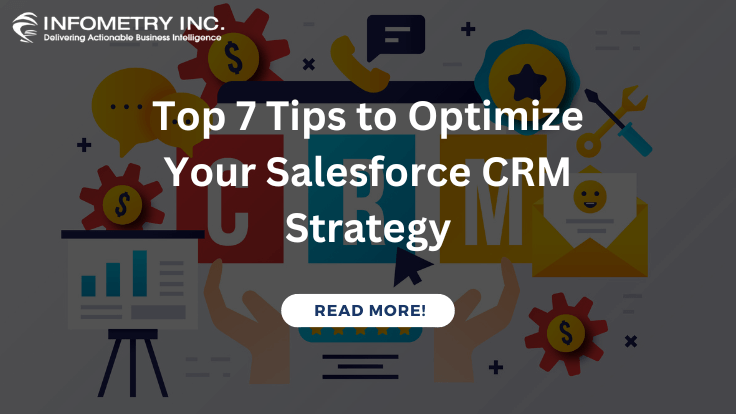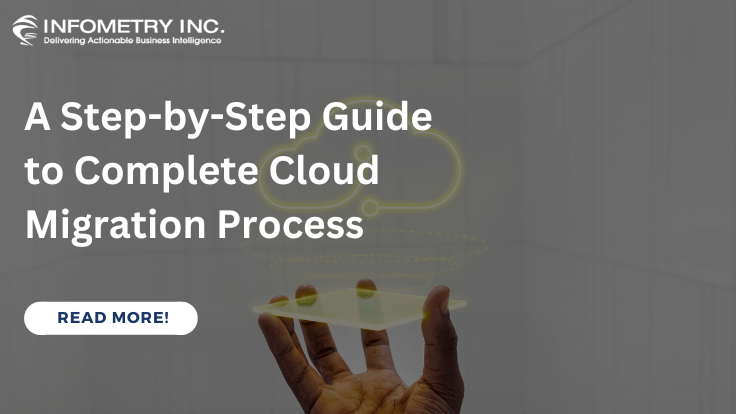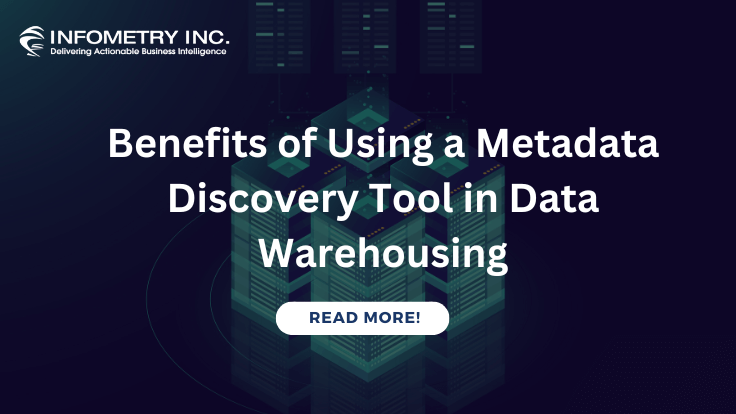
Top 7 Tips to Optimize Your Salesforce CRM Strategy
March 17, 2023
A Step-by-Step Guide to Complete Cloud Migration Process
April 3, 2023As per Cybersecurity Ventures, more than 100 Zettabytes of information will be stored in Cloud Data Warehouses and worth USD 448.34 billion by 2025. These numbers show how the cloud market will expand in the coming years.
Success in the ongoing advanced world requires embracing the power of the cloud, especially as organizations progressively move their applications to the cloud to spike development.
WebTribunal Cloud Migration reports that worldwide spending on public cloud services will increment from $257.5 billion in 2022 to $623.3 billion by 2023. More than 45% of IT investment will move from conventional solutions to cloud-based services by 2024.
Regardless of considerable investments in the cloud, one out of three organizations never receives the benefits. As per the Unisys Cloud Success barometer survey, 33% of firms have encountered almost no improvement in organizational effectiveness since embracing the cloud. Moving to the cloud is a mind-boggling and costly interaction. So how to stay away from cloud migration failure?
Planning effectively and picking the best cloud migration strategy for your IT resources is the way to track down the solution, develop a path for migration, and switch to the cloud more easily.
Move your business components, information, and applications to a cloud climate by picking the most reasonable cloud migration strategy. This guide covers all you want to be familiar with regarding cloud migration as various cloud migration strategy types, including their use cases, challenges, benefits, and best practices to ease your migration process in 2023.
Let’s get started with discovering what cloud migration strategy is.
What is a Cloud Migration Strategy & Why Do You Need One?
A cloud migration strategy is a detailed plan that outlines how an organization will move its digital assets, such as applications, data, and IT resources, from on-premises infrastructure to the cloud. A cloud migration strategy is crucial because it helps an organization avoid potential pitfalls during the migration process and ensure a successful migration to the cloud.
Here are a few key reasons why you need a cloud migration strategy:
Establish clear objectives
A cloud migration strategy helps you establish explicit purposes and goals for the migration process, such as reducing costs, improving scalability, or enhancing security. This ensures everyone involved in the migration is on a similar page and working towards the same objectives.
Identify suitable cloud deployment models
A cloud migration strategy helps you identify the most appropriate ones for your organization, such as public, private, or hybrid cloud. This ensures you choose the right cloud environment that meets your organization’s needs and requirements.
Assess compatibility
A cloud migration strategy helps you assess existing applications and data compatibility with the cloud environment. This ensures that you identify any potential issues or obstacles that may arise during the migration process and take steps to mitigate them.
Plan migration techniques
A cloud migration strategy helps you plan the migration techniques used during the migration process, such as lift-and-shift, re-architecting, or refactoring. This ensures that you choose the proper migration techniques to migrate to the cloud successfully.
Ensure security and compliance
A cloud migration strategy helps ensure safety and compliance during migration. This ensures you meet regulatory requirements and protect your digital assets from potential security threats.
Types of Cloud Migration Strategy
There are generally three types of cloud migration strategies:
Lift and Shift
This strategy involves moving applications and data from on-premises infrastructure to the cloud with minimal changes. The application and infrastructure architecture remains the same, and the migration process primarily focuses on moving data and applications to the cloud environment.
Replatforming
This strategy involves changing the applications and infrastructure to take advantage of cloud-specific features and services. For example, an application may be re-architected to utilize cloud-native features such as serverless computing, containerization, or cloud-based databases.
Refactoring
This strategy involves significant changes to the applications and infrastructure to make them cloud-native. The application code may be entirely rewritten to exploit cloud-native features and services such as microservices, API-driven architectures, and cloud-based analytics.
Each type of cloud migration strategy has its advantages and disadvantages. The lift and shift approach can quickly move applications and data to the cloud with minimal changes, but it may not take advantage of all the benefits of cloud computing. Replatforming can help organizations take advantage of cloud-native features and services, but it may require more significant changes and a longer migration timeline. Refactoring can result in the most important benefits, but it can also be the most time-consuming and resource-intensive approach.
The type of cloud migration strategy that an organization chooses will depend on its business needs, existing infrastructure, and goals for moving to the cloud.
Top 8 Best Practices for Successful Cloud Migration Strategy in 2023
Here are the top 8 best practices for a successful cloud migration strategy in 2023:
Perform a comprehensive assessment: Before migrating to the cloud, perform a thorough assessment of your organization’s infrastructure, applications, and data. This will help you identify potential issues and plan for a successful migration.
Define your migration goals
Define them upfront and ensure they align with your overall business strategy. This will help you prioritize which applications and data to migrate and when.
Choose the suitable cloud deployment model
Choose the right one that aligns with your business needs and requirements. This may involve a public, private, or hybrid cloud solution.
Develop a detailed migration plan
Develop a detailed migration plan that outlines the steps, timelines, and resources required to migrate your applications and data to the cloud.
Optimize your applications for the cloud
Optimize your applications for the cloud environment to take advantage of the cloud’s scalability, flexibility, and cost-efficiency benefits.
Ensure security and compliance
Ensure security and compliance during the migration process by establishing strict access controls, data encryption, and auditing measures.
Test and validate
Test and validate your applications and data in the cloud environment before going live. This will help you identify any issues and ensure a successful migration.
Optimize your cloud environment
Continuously optimize your cloud environment to ensure optimal performance, cost-efficiency, and scalability.
Following these best practices can ensure a successful and smooth migration to the cloud in 2023.
Benefits of a Cloud Migration Strategy
There are numerous benefits of having a cloud migration strategy, including the following:
Scalability
Cloud computing lets businesses scale up or down their resources quickly and efficiently per their needs. A well-planned cloud migration strategy will enable organizations to use cloud computing’s scalability benefits.
Cost savings
Migrating to the cloud can result in significant cost savings, eliminating the need to maintain and upgrade on-premises hardware and software. A cloud migration strategy can help businesses identify areas to save costs.
Improved agility
Cloud computing enables businesses to be more agile and responsive to changing needs. A cloud migration strategy helps companies to align their IT infrastructure with their business goals and objectives.
Enhanced security
Cloud providers generally have more robust security measures than most on-premises IT infrastructures. A cloud migration strategy ensures that security is a top priority and that businesses can take advantage of the enhanced security measures provided by cloud providers.
Increased productivity
Cloud computing offers a variety of tools and applications that can help increase productivity and collaboration among employees. A cloud migration strategy can help businesses identify which tools and applications will benefit them the most.
Improved business continuity
Cloud computing provides businesses with built-in redundancy and disaster recovery capabilities to help ensure business continuity during a disaster. A cloud migration strategy can help companies to develop a comprehensive disaster recovery plan.
Limitations of a Cloud Migration Strategy
While a well-planned cloud migration strategy can bring numerous benefits to an organization, some limitations need to be considered:
Complexity
Cloud migration is a complex process that requires a detailed understanding of an organization’s IT infrastructure and applications. Creating a cloud migration strategy can be time-consuming and require significant expertise.
Data Transfer
Moving data from on-premises to the cloud can take a significant amount of time and can be limited by network bandwidth. The more considerable the amount of data to be transferred, the more time and cost it will take.
Downtime
During migration, some downtime may occur as applications and data are moved to the cloud. This downtime can impact business operations and may need to be scheduled at times that cause the least disruption.
Cost
While cloud computing can result in cost savings in the long run, the migration process can require high upfront costs, such as purchasing new hardware or software, training employees, and hiring additional resources.
Security and Compliance
Cloud providers generally have more robust security measures than most on-premises IT infrastructures. However, it is still essential for organizations to ensure that their data is secure and compliant with relevant regulations during the migration process.
Vendor lock-in
Once an organization has migrated to a particular cloud provider, switching to another provider can be difficult and expensive. This can limit an organization’s flexibility and make it challenging to use new technologies or services offered by other cloud providers.
Takeaway
A cloud migration strategy requires cautious preparation, testing, and resourcing. A lot is on the line when a cloud migration process starts. Both business and operations should be secure from the get-go. A good cloud migration strategy guarantees that this viewpoint is taken care of and the enterprise leverages the cutting-edge innovation of the cloud to surge ahead.




